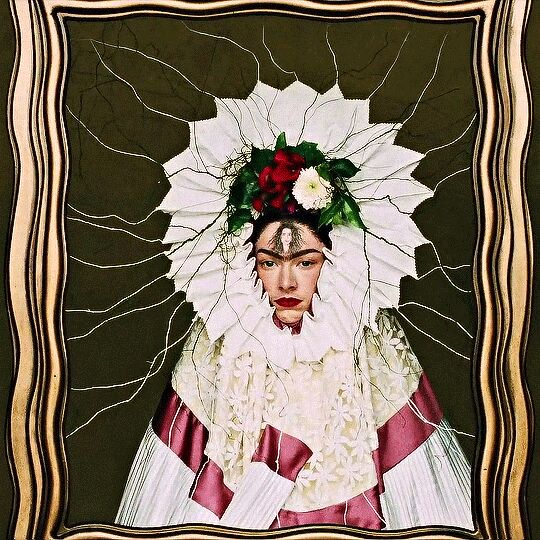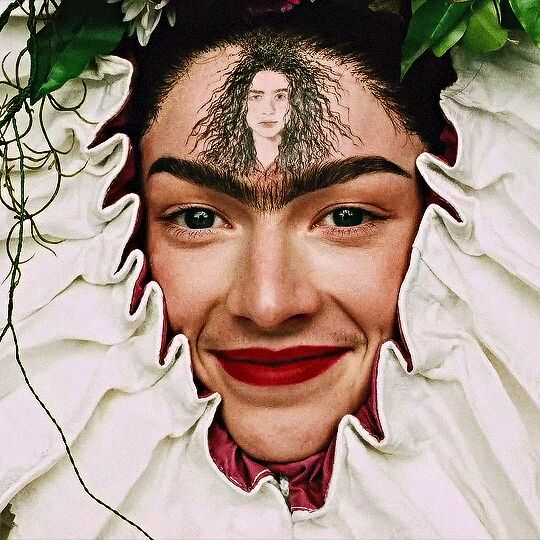 @hunterschafer
@hunterschafer
The episode's title is "You Who Cannot See, Consider Those Who Can," and it begins with Rue (Zendaya), the show's protagonist, reflecting on how deeply she has fallen for her girlfriend Jules (Hunter Schafer). "I don't believe you understand how much I adore Jules," Rue says in voiceover as a sequence of images resembling masterpieces on display in the world's most prestigious museums scroll by.
There's a shot of Schafer dressed as Venus from Sandro Botticelli's The Birth of Venus (ca. 1485), which is frequently cited as one of the most significant works of the Italian Renaissance, and another that's meant to evoke René Magritte's The Lovers (1928), a Surrealist painting in which two people with clothed faces appear to lock lips. The scene concludes with a shot of Schafer posed similarly to Frida Kahlo's Self-Portrait as a Tehuana (1943), in which the painter appears dressed in a traditional Tehuana costume with tendrils sprouting from the floral headgear. Kahlo is seen in that painting with a portrait of her husband, the artist Diego Rivera, on her forehead. (Kahlo completed the painting in 1940, the year the couple remarried following a brief divorce.) Jules is depicted in Euphoria with an image of Rue on her brow.
 @hunterschafer
@hunterschafer
Sam Levinson, creator of the show and writer and director of last night's episode, appears to intend this montage to function as a vehicle for subverting female beauty norms. In Europe and beyond, the Botticelli painting has long been regarded as an ideal of womanhood. Kahlo, on the other hand, resembled no Venus—she frequently openly donned a unibrow in defiance of the era's beauty standards for women. By referencing these two paintings and then situating Jules, a trans woman, within imagery traditionally associated with cisgender women, Levinson is attempting to complicate images that have become codified in mainstream culture, allowing for new and more complicated readings that seem to fit the characters of Euphoria, the majority of whom are queer and non-white.
After all, this is Euphoria, where aesthetic embellishments frequently take precedence over logic and purpose. Among a slew of other problems, one might inquire how Schafer's cosplay as a woman of color is acceptable, or why these three paintings were chosen for this sequence rather than other works that might have made more sense (a photograph by the gender-bending Surrealist artist Claude Cahun, perhaps). As is frequently the case with this series, it's best not to dwell on any of it too deeply.


 Jean Dubreil
Jean Dubreil